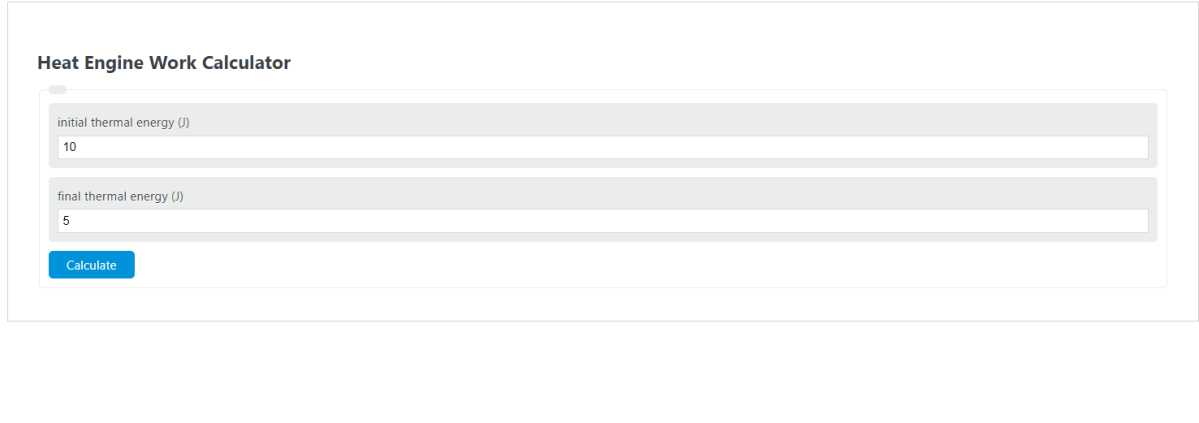Enter the initial thermal energy (J) and the final thermal energy (J) into the calculator to determine the Heat Engine Work.
- All Physics Work Calculators
- Velocity to Work Calculator
- Output Work Calculator
- Kinetic Energy To Work Calculator
Heat Engine Work Formula
The following formula is used to calculate the Heat Engine Work.
Whe = Q1 - Q2
- Where Whe is the Heat Engine Work (J)
- Q1 is the initial thermal energy (J)
- Q2 is the final thermal energy (J)
To calculate the heat engine work, simply subtract the final thermal energy by the initial thermal energy.
How to Calculate Heat Engine Work?
The following two example problems outline how to calculate the Heat Engine Work.
Example Problem #1:
- First, determine the initial thermal energy (J). In this example, the initial thermal energy (J) is given as 70.
- Next, determine the final thermal energy (J). For this problem, the final thermal energy (J) is given as 30.
- Finally, calculate the Heat Engine Work using the equation above:
Whe = Q1 – Q2
Inserting the values from above and solving the equation with the imputed values gives:
Whe = 70 – 30 = 40 (J)
FAQ
What is thermal energy?
Thermal energy refers to the internal energy present in a system due to its temperature. It is the total kinetic and potential energy of the particles in an object, which can be transferred as heat.
How does a heat engine work?
A heat engine operates by converting thermal energy into mechanical work. It typically involves a working substance (like gas) that expands and contracts within a cylinder, moving a piston as it absorbs heat from a high-temperature source and releases it to a lower temperature sink, thus producing work.
What are some common applications of heat engines?
Heat engines are widely used in various applications, including internal combustion engines in cars, steam turbines in power plants, and Stirling engines in solar power generation. They play a crucial role in converting heat energy into mechanical work, powering numerous devices and vehicles.
